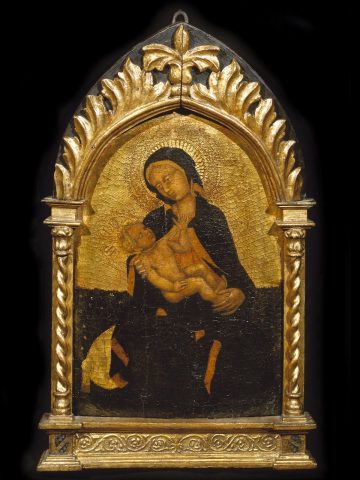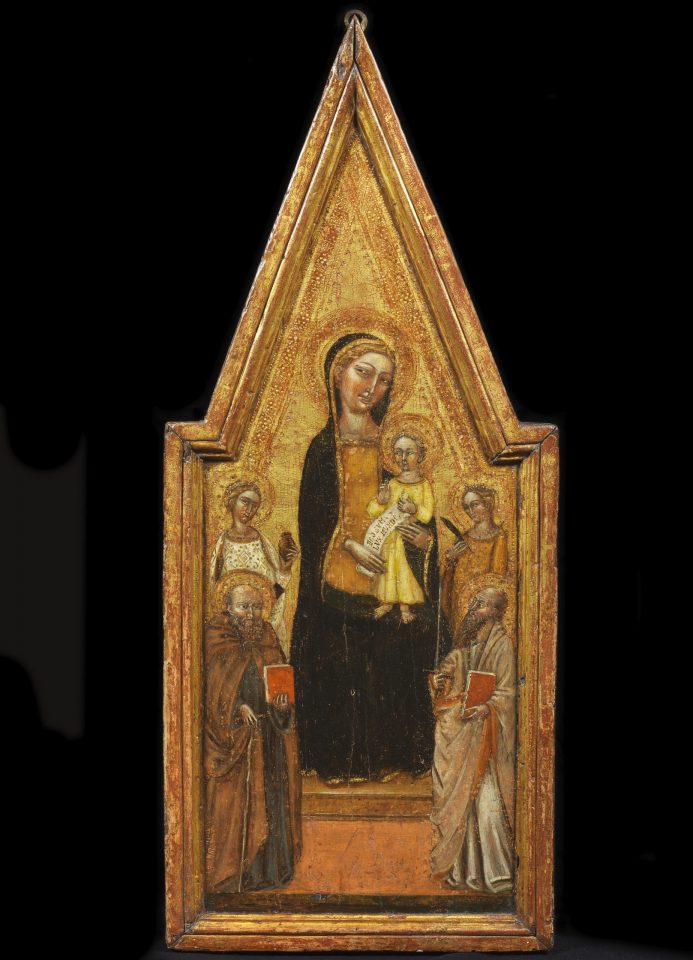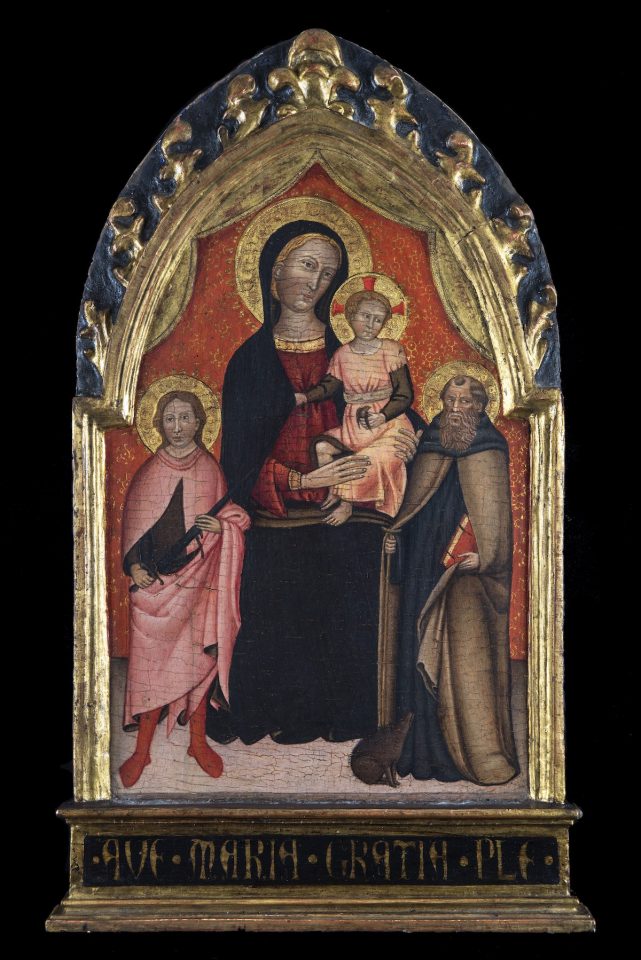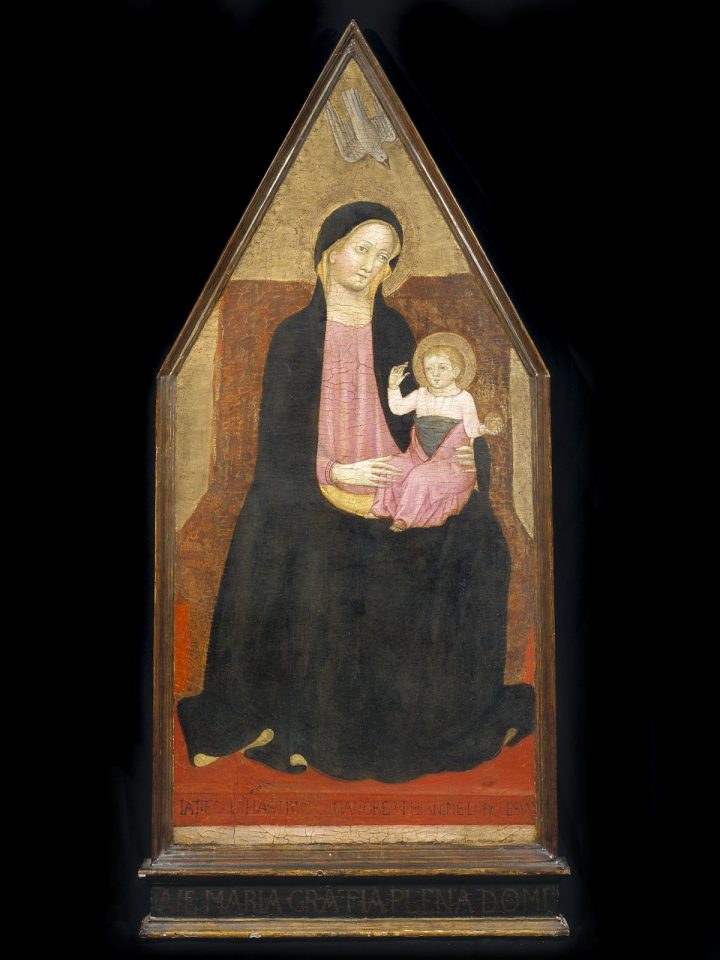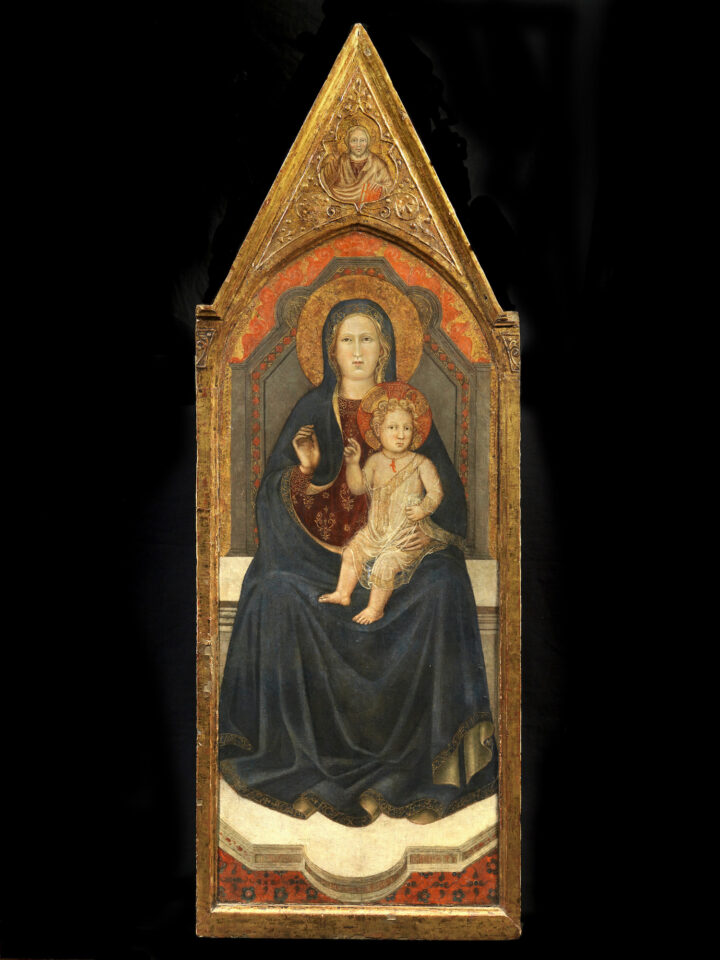ZANINO DI PIETRO
Documented in Bologna, 1389 – Venice, 1448 ca.
Madonna of the Humility
tempera and gold on panel, cm 50×33
In the late 14th century, Niccolò di Pietro revived the iconography of the ‘Madonna of Humility’ in Venice, previously introduced by Simone Martini in Avignon at the start of the century. The image sees the Virgin seated on a lawn, often on a golden cushion, as in this case. Giovanni di Pietro Charlier, more commonly known as Zanino di Pietro, is one of the most emblematic painters of the Venetian Late Gothic and was active in the area throughout the first half of the 15th century. Having probably trained in Emilia, the artist combined elements of the Bolognese tradition from the previous century with the subtle sumptuousness of Gentile da Fabriano and Michelino da Besozzo. Linda Pisani, author of a study on this work, proposes a date in the early 15th century, during the most typical phase of the painter’s career.
The panel features in the monograph on the painter by Valentina Baradel, who notes how the stylistic characteristics are exactly what we might expect of a painting from the first decade. As indicated by Pisani, our ‘Madonna of Humility’ is listed as a work by Zanino di Pietro in the photographic files of the Kunsthistorisches Institut in Florence (KHI 451354).
Publications:
“Catalogo Fototeca Kunstihistorisches Institut di Firenze”, entry no. KHI 451354.
“Pittura dal Duecento al primo Cinquecento nelle fotografie di Girolamo Bombelli”, edited by A. G. De Marchi, Milan, 1991, cat. 585, p. 237.
“Zanino di Pietro. Un protagonista della pittura veneziana fra Tre e Quattrocento”, edited by Valentina Baradel, Poligrafo, Padua, 2019, pp. 179-180, fig. XIV, form 7.

